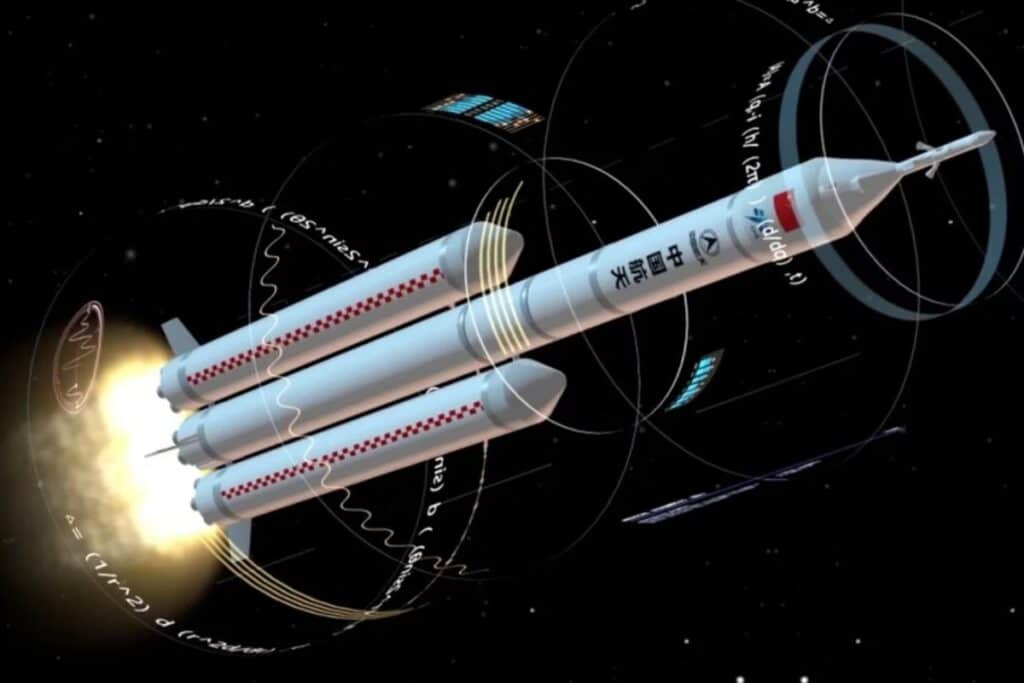China’s space agency has announced plans for imminent crewed missions to the Moon. A Chinese astronaut could set foot on our satellite by 2030, which would be a major success compared with its American rival, whose own projections stretch further into the future.
‘Every research and development programme working to send a person to the Moon is making steady progress.’ That statement comes from Zhang Jingbo, spokesperson for China’s crewed space programme, during a conference held in late October. He then added, according to comments reported by phys.org: ‘Our goal of carrying out a crewed landing on the Moon in 2030 remains firmly in place.’
This announcement is far from trivial, especially as on the American side, efforts to speed up Artemis III appear difficult, pushing the target date back to 2028 at the earliest – a deadline that still seems highly optimistic given how far the project has to go.
China’s progress…
In any case, China once again made its ambitions clear during a conference to present the new astronaut crew that will head to its space station on the next flight, scheduled for 31 October.
Three astronauts will lift off for Tiangong, the Chinese orbital station, including the country’s youngest astronaut, Wu Fei, an engineer just 32 years old. He will be joined by Zhang Hongzhang, a newcomer, and Zhang Lu, a veteran who already flew on the Shenzhou 15 mission in 2022.

The Chinese crew for the Shenzhou-21 mission. © AP Photos, Andy Wong
On top of that, the mission will also carry a ‘crew’ of mice for microgravity experiments – another first for China’s space sector. With a series of six month missions, astronauts are helping to expand the national programme while continuing to improve the Tiangong station, all with an eye on future journeys to the Moon and even Mars.
… and American concerns
In the United States, these spectacular advances are causing real unease. Not only have China’s recent missions been successful – from its Zhurong rover on Mars to lunar sample return operations and rocket tests – but the country has been highly visible in promoting its progress.
Last summer, China heavily publicised tests of its future lunar hardware, including the first stage of the Long March 10 launcher and the Lanyue lunar lander module. These successful trials underline the country’s impressive momentum in the new Moon race.
Long March 10 is a 92 metre tall giant that has yet to fly, but its first test launch is expected in 2027. Under the current Chinese lunar mission architecture, two launches are planned for 2030: the first would carry the crew in their Mengzhou capsule, and the second would send the lander.

Artist’s impression of the Long March 10 rocket. © CASC
The two spacecraft would then perform an orbital rendezvous near the Moon so the astronauts could change vehicles and board Lanyue for the descent to the lunar surface. For the trip back to Earth, they would return to Mengzhou.
Panic on board at NASA
Meanwhile, NASA is urgently reworking its plans in light of the setbacks facing SpaceX’s Starship. The agency has announced a new call for proposals to find a simpler, more realistic architecture for returning humans to the Moon. Unsurprisingly, this has not gone down well with Elon Musk, whose company now risks losing its contract after several years of work.
At the same time, even if teams remain committed, the ongoing government shutdown in the United States is also causing delays for the crewed Artemis II mission. This flight is meant to take American astronauts into orbit around the Moon and return them to Earth after a few days – without landing on the lunar surface on that occasion.

Hugo Ruher
Science journalist
Science journalist, I am above all passionate about space, which is what inspired me to pursue this specialty. Drawn to science in general, I also closely follow news related to the environment and technology.
After earning a degree from Sciences Po Toulouse, I began working in radio, covering general news, international issues, and even local problems. At the same time, I started a career as a science journalist, first focusing on space and later on environmental topics.
Making complex information simple
A large part of my work involves reading scientific studies published in various journals, texts that are often complex or downright indigestible! My goal is to extract information from them and make it accessible to a broader, non-expert audience. This ambition is what truly drives me.
This path has led me to write for teen magazines like Cosinus, highly specialized publications such as Industrie & Technologies, as well as more mainstream outlets like Numerama or Le Monde.
In addition to that, I also sometimes write about topics that are a bit more “lightweight.” The digital world, ranging from the use of social media to AI, and even the culture around video games—are areas that I find fascinating and worth covering with a serious approach.

